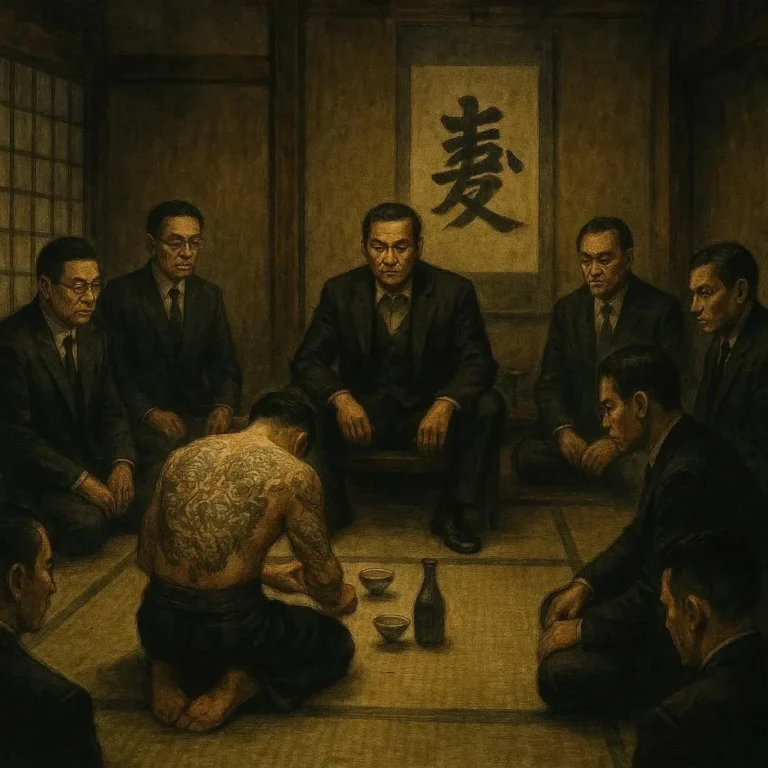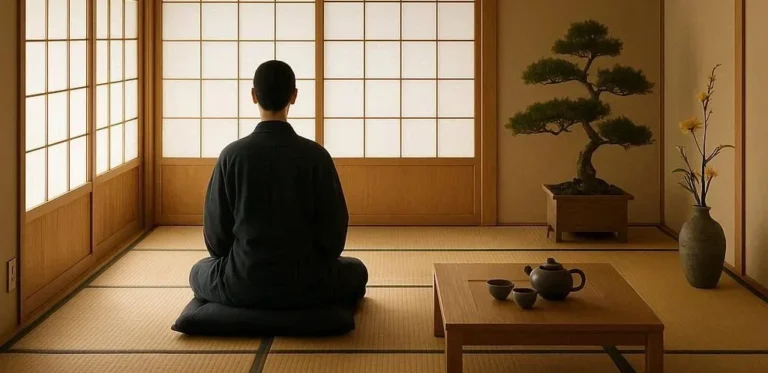508 views Unlocking the Essence of Japan Culture: A Deep Dive into Tradition, Food, and Modernity
Japan, an archipelago that blends ancient heritage with cutting‑edge innovation, offers a cultural tapestry that captivates travelers, scholars, and dreamers worldwide. From the solemnity of Kyoto’s temples to the neon glow of Tokyo’s Shibuya crossing, each experience is a window into centuries of values shaped by nature, philosophy, and relentless curiosity. This post explores Japanese culture through four lenses—history, etiquette, culinary arts, and pop‑culture—highlighting how these elements coexist and evolve together.
1. The Historical Foundations: From Shinto Roots to Meiji Modernization
Shinto: Nature‑Connected Spirituality
Shinto, Japan’s indigenous faith, is centered on venerating kami—spirits that inhabit natural objects and phenomena. Shrines like Meiji Jingu in Tokyo or the sacred spring at Beppu Honor the living world. The Shinto belief in mottainai—a sense of regret concerning waste—underscores a communal responsibility toward the environment, a value that echoes in modern Japanese practices such as meticulous recycling and sustainable product design.
Buddhism and Zen Influence
Buddhism entered Japan in the 6th century, merging with Shinto traditions and giving birth to Zen—an emphasis on meditation, simplicity, and the moment‑to‑moment experience. Zen’s influences permeate everything from the minimalistic architecture of the Kinkaku‑ji (Golden Pavilion) to the disciplined training of martial artists. The concept of wabi‑sabi, or finding beauty in imperfection, evolved from Zen teachings and continues to guide Japanese art, craft, and even everyday aesthetics.
The Edo Period: A Time of Cultural Flourishing
During the Edo period (1603–1868), Japan isolated itself from the outside world, allowing the arts to flourish. The ukiyo‑e woodblock prints, depicting bustling city life and seasonal scenery, captivated the masses. The rise of ukiyo (floating world) influenced not only visual art but also entertainment—kabuki theater, rakugo storytelling, and the early forms of jidaigeki (period dramas). The period also birthed distinct sartorial styles—kimono for the elite, yukata for summer festivals—both of which remain cultural staples.
Meiji Restoration: Westernization and Modern Identity
The Meiji Restoration (1868) abruptly ended Japan’s isolation, ushering in rapid industrialization. The government adopted Western technology while preserving core cultural values, leading to a unique blend that defines modern Japan today. The period saw the creation of the Japanese educational system, a foundation for monozukuri (the art of craftsmanship) that marries tradition with precision engineering.
2. Social Etiquette: Navigating the Subtle Art of Politeness
Japanese society prizes harmony and respect, reflected in everyday conduct and highly codified etiquette. The principles of kenkō (humility), meiwaku (avoiding trouble), and aizuchi (interjection nods) guide interactions from business meetings to single‑specia cafés.
Bowing: The Universal Greeting
The most recognizable form of courtesy is the bow (ojigi). A slight nod denotes acknowledgement, while deeper bows indicate apologies or gratitude. In a corporate setting, a 15–30-degree bow conveys respect; a 45-degree bow suggests deeper sincerity, such as during a job interview or a formal dinner.
Gift‑Giving: Symbolic Reciprocity
Gift exchange in Japan is a ritual rooted in reciprocity (en). Gifts are wrapped elegantly; the wrapping itself holds meaning. Exchanging a furoshiki (colorful cloth used for wrapping) signals subtlety and respect. Avoid giving clocks, umbrellas, or sharp objects—symbols of cutting or passage—unless the relationship is extraordinary.
Table Manners: From Gochisō to Ishō Shibō
Meals are communal, and the flow of conversation respects the kōen (public air). Some key points:
- Always say “itadakimasu” before eating and “gochisōsama deshita” after.
- Begin with the smallest dish; finish with the largest, showing respect for the host.
- Avoid speaking loudly around bowls; chewing quietly displays etiquette.
Remember: shōgen (interruption) during meals is taboo. Speaking while drumming or declined a dish publicly is considered impolite.
Public Behavior: Quiet Cohesion
Japanese people keep noise levels low in trains and cafés. Long conversations over phone calls in congested public spaces are frowned upon. Remaining stoic in public demonstrates kakehi, a professional sense of decorum. The existence of “silent rooms” in libraries and shūgen (quiet reading spaces) exemplifies this cultural preference.
3. Culinary Arts: The Taste of Tradition and Innovation
Rice & Respect: The Staple of Society
Rice (gohan) sits at the heart of every Japanese meal, featuring not just as a staple but also as a spiritual anchor. The ritual of shōtō (rice-washing ceremony) underscores the goodness of the grain. A well‑prepared nori‑wrapped rice ball (onigiri) is the quintessential no‑frills lunch for commuters, yet it holds an artisanal aesthetic.
Sushi & Sashimi: The Art of Perfection
Sushi—thin, raw fish over seasoned rice—has long been both a culinary art and a social experience. The sushi master’s precision and the use of carefully selected, seasonal fish (tuna, yellowtail, eel) create a dynamic that reflects seasonal cycles. Etiquette extends to ashi‑hōshi (rice‑residue taps) and gōra, indicative of decades of training.
Ramen: A Bow of Comfort in a Broth
Ramen has migrated from paleye origins to become a national staple, reflecting regional differences in broth: tonkotsu (pork bone/creamy) in Kyushu, shio (salt‑based) in Hokkaido, and shōyu (soy) in the Kanto area. Each broth tells a story of local resources and tradition, while the modern ramen chains (Ippudo, Nabeya) have introduced globally recognizable flavors.
Pickles, Miso, and Fermented Flavors
Japanese cuisine heavily relies on fermentation. Canned miso (miso shiru), pickled daikon (takuan), and natto (fermented soybeans) all showcase the umami depth championed by the culture. The process of marinating vegetables in salty brine (nukazuke) showcases patience—the result is a sustained umami pleasure.
Kawaii Confectionery: The Sweet Side
While mochi, dango, and matcha embody traditional sweets, the kawaii (cute) aesthetic multiplied with the rise of themed cafés—hello kitty, harry potter, and anime-inspired cafés. This blend of visual flair and flavor creates a samurai‑like dedication to detail, catering to the modern, experience‑driven demographic.
4. Pop‑Culture & Technology: Japan’s Global Influence
Anime & Manga: A Window into the Collective Mind
Since the 1960s, anime and manga have served as cultural exports, shaping global perceptions of Japan. Iconic series such as Naruto, Dragon Ball Z, and Studio Ghibli animations (e.g., Spirited Away) reveal narrative motifs: the journey of self‑discovery, the virtue of friendship, and the moral tension between modernity and nature.
Video Games: J-Game Development & Competitive Esports
Japan pioneered iconic franchises—Mario, Pokémon, Final Fantasy—setting emotional storytelling standards. The nation’s gaming culture is also enriched by Nintendo Switch, Arcades with Miraplex, and traditional gachapon machine collectibles. The world’s first console, the Family Computer, further illustrates Japan’s long-standing commitment to interactive media.
Robotics & Innovation: The Future in Planes
From Tamagotchi to ASIMO, Japan’s robotics industry has striven to merge ergonomics with efficiency. Research works on humanoid robots, autonomous vehicles, and AI healthcare demonstrate a national inclination toward sustainable development and societal welfare. This technological hug of careful craftsmanship underscores monozukuri and displays a strong conviction toward quality.
5. Festivals & Seasonal Celebrations: Nature’s Rhythm
Cherry Blossom (Hanami)
Marked by pink overcast skies, cherry blossoms are Japan’s most celebrated event. Hanami—flower viewing—merges with subtle sora (sun) acceptance, street markets, and sake tastings. It’s a festival of renewal and connecting with community.
Tanabata & Miko
Tanabata celebrates a love‑story between two stars, with tate‑tatsuta (string drawing). When people hang color‑coded memories, they are, according to folklore, “unwinding.” Miko (shrine maidens) display hayarimono (ramen‑like templated patterns) to invite kegara (brightness) during Yaegahara.
Obon & Thanksgiving
Obon, a Buddhist tradition, honors ancestors. Bon odori, vibrant dancing in lantern light, demonstrates community cohesion. Thanksgiving, adapted to involve Kōkai (etsyu dinners), interweaves U.S. influences with Japanese decorum—an evolving blend of East and West.
6. The Modern Balance: Tradition Meets Rationality
In a country where praises for shōnen and shōjo stand as testament to high study rigour, the delicate relationship between tradition and innovation is advanced. The motto “Ansei era” (i.e., the times of super‑modern and yet deeply nihon oriented quality) ensures that the nation does not lose its identity despite globalization.
Key takeaways:
- Respect & gratitude remain at the forefront—whether it’s the bow, gift‑giving, or table manners.
- Nature influences everything: the tea ceremony’s must be out of obvious natural designs, architecture, and agriculture.
- Culinary arts highlight seasonality and fermentation—fusing tradition & health.
- Pop culture & technology drive Japan to the apex of global innovation.
- Festivals celebrate shared time; they rest on community and seasonal reverence.
The Future Landscape
Looking ahead, Japan’s digital twin projects, green–energy ambitions, and regional strategies show an elevated lifestyle oriented toward well‑being while reassessing the kōmyō (luminous knowledge) of past methodologies. The delicate approach teaches future innovators that a society’s half‑past is a builder for future growth.
Your Journey Starts Here
Whether you plan a trip, pursue study, or view Japan from a distance, the cultural nuances outlined above shape the essence of what japans culture truly embodies: a living dialogue between history and progress. Embrace the depth, adjust your perceptions based on habits, and you’ll discover a harmonious blend of respect, beauty, and innovation. Let the next step be your guide to a deeper understanding.





